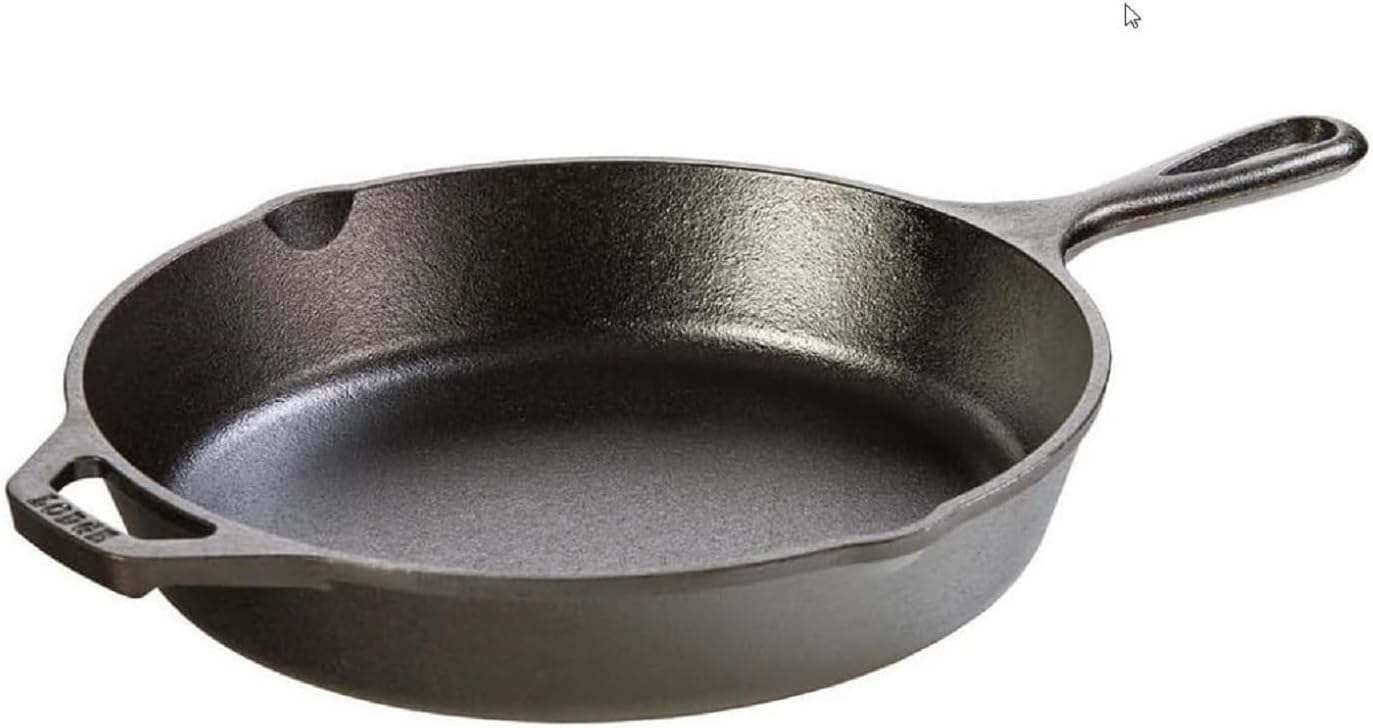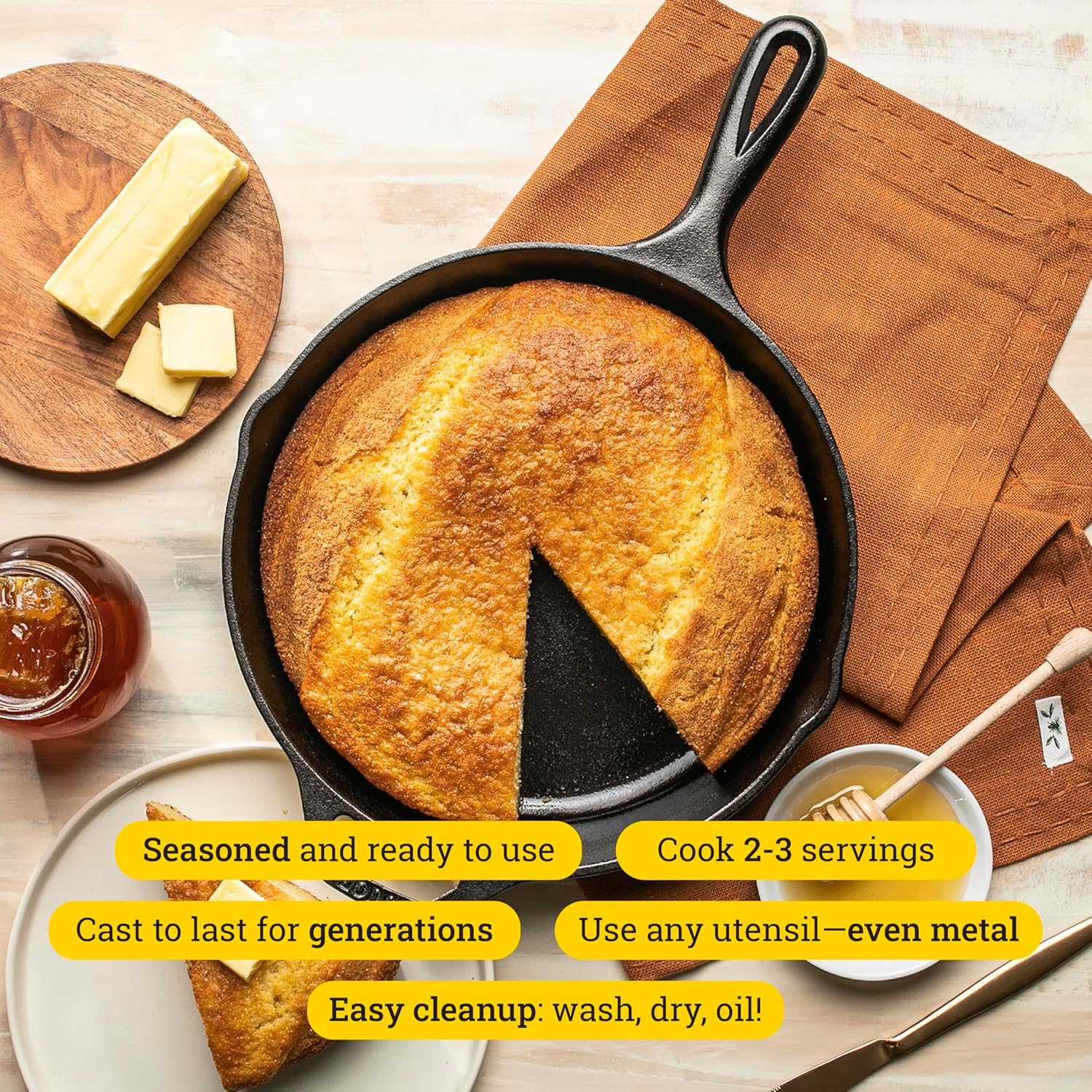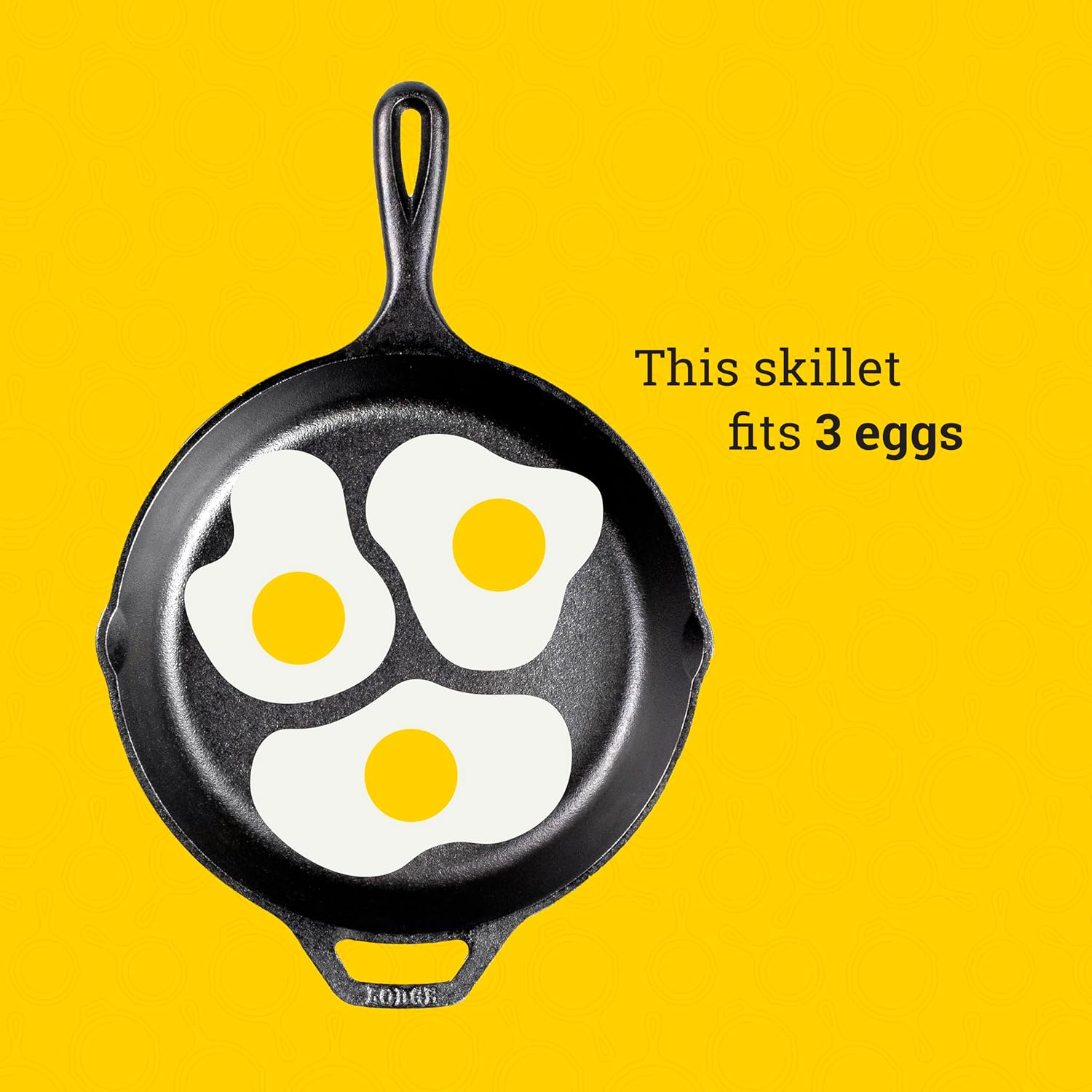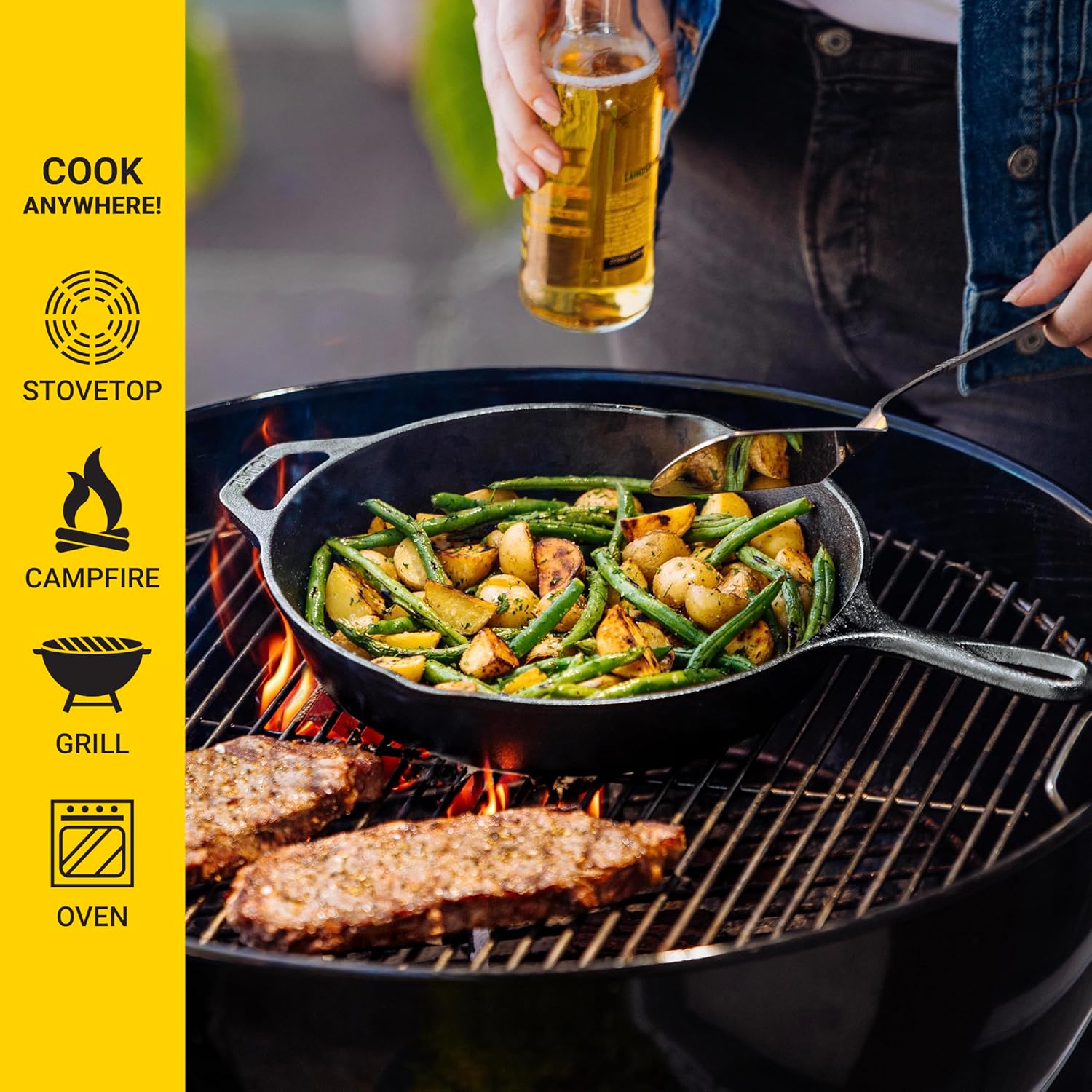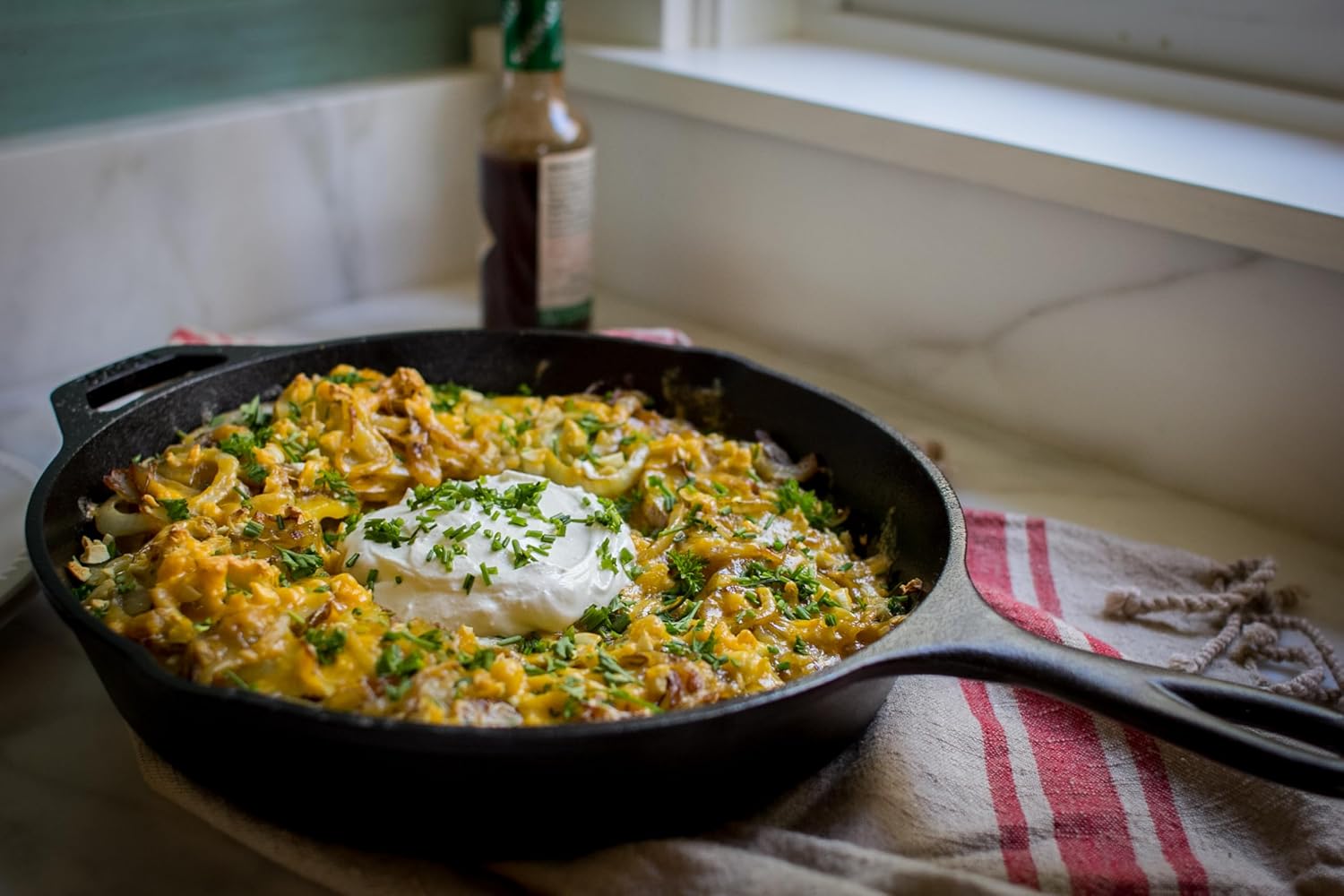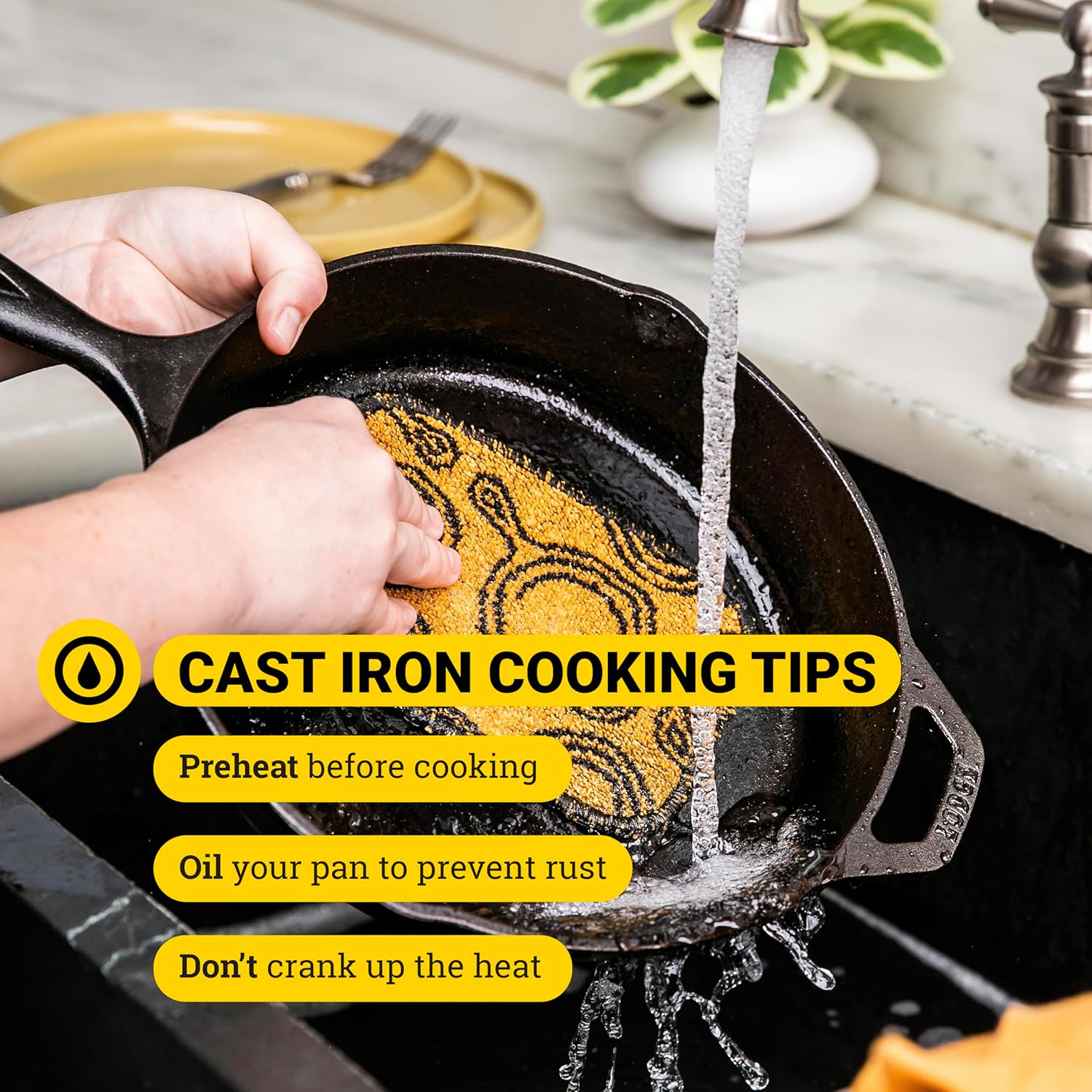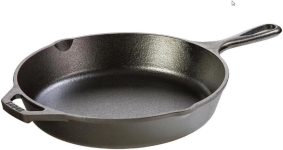
Lodge 10.25 Inch Cast Iron Skillet – Black Friday Cast Iron Skillet Review – Oemiu
Black Friday Lodge 10.25 Inch Cast Iron Skillet – A Timeless Kitchen Companion
The satisfying sizzle of food hitting a well-seasoned cast iron skillet is a sound familiar to generations of cooks. Beyond the culinary romance, lies a tool that’s as versatile as it is durable, capable of searing steaks to perfection, baking golden cornbread, and simmering hearty stews. While many brands have entered the cast iron market, Lodge, a name synonymous with American-made quality and value, continues to be a dominant force. Their 10.25-inch cast iron skillet, often a Black Friday highlight, is a quintessential piece of cookware for both beginners and seasoned chefs. But is it truly worth the hype? This review delves into the specifics, exploring its features, performance, and overall value, helping you decide if this classic skillet deserves a place in your kitchen.
Unboxing and First Impressions: A Legacy in Your Hands
The initial encounter with the Lodge 10.25-inch cast iron skillet evokes a sense of solidity and heritage. Unlike the sleek, polished stainless steel of modern cookware, cast iron has a raw, almost primal feel. Lifting it, you immediately notice the substantial weight – a characteristic that contributes to its excellent heat retention. This weight can be a minor drawback for some, especially those with wrist or strength limitations, but it’s also a testament to its robust construction. The pre-seasoned surface, though not perfectly smooth initially, offers a good starting point for building your own layers of polymerized oil, a process that enhances its non-stick properties and protects the iron from rust.
The handle is sturdy and features a loop for hanging, a practical design element that helps with storage. While some high-end cast iron skillets boast ergonomic or heat-dissipating handles, Lodge keeps it simple and functional. The assist handle on the opposite side provides extra support when lifting or maneuvering the skillet, a particularly useful feature when it’s filled with food. Examining the casting, you might notice minor imperfections – a slightly rough texture or a few tiny blemishes. These are common in cast iron and do not affect the performance or longevity of the skillet. In fact, many cast iron enthusiasts see these imperfections as part of the skillet’s character, a mark of its unique manufacturing process. The pre-seasoning from the factory is adequate, but most users find that further seasoning dramatically improves the cooking experience. This is a journey, not a destination, as each use builds upon the last, creating a patina that is both beautiful and functional. This journey is a key aspect of owning a **cast iron skillet**, and learning how to properly season and care for it is essential for maximizing its lifespan and performance.
Performance Under Pressure: Searing, Baking, and Beyond
The true test of any cookware lies in its performance, and the Lodge 10.25-inch cast iron skillet excels in a variety of cooking applications. Its exceptional heat retention ensures even cooking, eliminating hot spots that can plague thinner pans. This is particularly crucial for searing meats, as the high, consistent heat creates a beautiful crust while keeping the inside juicy and tender. Imagine searing a ribeye steak in this skillet – the sizzle as it hits the hot surface, the rich, savory aroma filling the kitchen, and the perfectly browned exterior with a tender, pink center. This skillet makes that culinary vision a reality.
Beyond searing, the Lodge skillet is equally adept at baking. Its even heat distribution is ideal for creating perfectly golden cornbread, crispy-edged pizzas, and decadent desserts. The ability to transfer seamlessly from stovetop to oven is another significant advantage, allowing you to sear a chicken on the stovetop and then finish it in the oven without dirtying another pan. This versatility extends to camping as well. The Lodge 10.25-inch cast iron skillet is a reliable companion for cooking over an open fire, its rugged construction able to withstand the harsh conditions of the outdoors. Whether you’re frying bacon and eggs for breakfast or cooking a campfire chili, this skillet is up to the task.
However, it’s important to understand the skillet’s limitations. While the pre-seasoned surface is a good start, it’s not a miracle non-stick coating. Eggs, for example, may stick initially, especially if the skillet is not properly heated or sufficiently seasoned. With practice and patience, however, you can achieve a surprisingly non-stick surface that rivals even the best non-stick pans. Also, acidic foods like tomatoes can strip away the seasoning over time, so it’s best to limit their exposure or re-season the skillet afterward. The beauty of a well-maintained **10.25 inch cast iron skillet** is how it adapts and improves over time.
| Cooking Task | Performance | Notes |
|---|---|---|
| Searing | Excellent | Exceptional heat retention creates a perfect crust. |
| Baking | Very Good | Even heat distribution ensures consistent results. |
| Frying | Good | Requires sufficient oil to prevent sticking, especially initially. |
| Simmering | Good | Suitable for long, slow cooking, but avoid prolonged exposure to acidic foods. |
Care and Maintenance: A Labor of Love
Owning a cast iron skillet is not just about cooking; it’s about embracing a tradition of care and maintenance. Unlike modern non-stick pans that can be tossed in the dishwasher, cast iron requires a more hands-on approach. But the effort is well worth it, as a properly maintained cast iron skillet can last for generations, becoming a cherished family heirloom. The key to cast iron care is to prevent rust and maintain the seasoning. This involves cleaning the skillet immediately after use, drying it thoroughly, and applying a thin layer of oil.
To clean the skillet, avoid harsh soaps or scouring pads, as these can strip away the seasoning. Instead, use hot water and a gentle brush or sponge. For stubborn food residue, you can use a chainmail scrubber or a small amount of dish soap, but be sure to re-season the skillet afterward. Drying the skillet completely is crucial to prevent rust. You can dry it with a towel or, even better, place it on a burner over low heat to evaporate any remaining moisture. Once the skillet is dry, apply a thin layer of oil – vegetable oil, canola oil, or flaxseed oil are all good options – and wipe away any excess. Then, heat the skillet in the oven at 350-400 degrees Fahrenheit for an hour to polymerize the oil, creating a hard, protective layer. This process, repeated regularly, will build up a strong, non-stick seasoning.
Re-seasoning is necessary when the seasoning becomes damaged or worn. This can happen if you cook acidic foods, scrub the skillet too vigorously, or leave it to soak in water. The re-seasoning process is similar to the initial seasoning process, but it may require multiple coats of oil. With proper care, your Lodge **cast iron skillet for sale** will develop a beautiful, dark patina that enhances its non-stick properties and protects it from rust. It’s a process that takes time and effort, but it’s also a rewarding part of owning a piece of cookware that will last a lifetime.
Black Friday Bargain or Timeless Investment?: The Value Proposition
The Lodge 10.25-inch cast iron skillet is known for its affordability, making it an accessible option for cooks of all skill levels. During Black Friday, the price often drops even further, making it an irresistible bargain. But even at its regular price, the Lodge skillet represents excellent value for money. Compared to higher-end cast iron brands, Lodge offers comparable performance at a fraction of the cost. While more expensive skillets may have smoother surfaces or more ergonomic handles, the Lodge skillet delivers the same essential functionality – exceptional heat retention, even cooking, and versatility.
Moreover, the durability of cast iron means that the Lodge skillet is a long-term investment. With proper care, it can last for decades, outperforming and outlasting most other types of cookware. This longevity, combined with its versatility, makes it a practical and economical choice. Consider the cost of replacing non-stick pans every few years, versus the one-time investment in a cast iron skillet that will only improve with age.
The Lodge skillet’s affordability also makes it a great option for beginners who are just starting to explore the world of cast iron cooking. It’s a low-risk way to experiment with different techniques and develop the skills needed to properly care for cast iron. And even for experienced cooks, the Lodge skillet is a reliable workhorse that can handle a wide range of cooking tasks. So, whether you’re looking for a budget-friendly option or a durable, versatile piece of cookware, the Lodge 10.25-inch cast iron skillet is a worthwhile investment. It is a **durable cast iron skillet** that will serve you well.
Alternatives and Comparisons: Navigating the Cast Iron Landscape
While the Lodge 10.25-inch cast iron skillet is a popular choice, it’s not the only option available. Several other brands offer cast iron skillets in a similar size and price range, each with its own unique features and benefits. Comparing these alternatives can help you make an informed decision and choose the skillet that best suits your needs and preferences.
One popular alternative is the Victoria cast iron skillet. Victoria skillets are known for their smoother surfaces and lighter weight compared to Lodge skillets. They also often feature longer handles that provide a better grip. However, Victoria skillets may be slightly more expensive than Lodge skillets. Another option is the Field cast iron skillet. Field skillets are known for their exceptionally smooth surfaces and lightweight design. They are also made in the USA, like Lodge skillets. However, Field skillets are significantly more expensive than Lodge skillets.
When comparing cast iron skillets, consider the following factors:
* **Surface texture:** A smoother surface is easier to clean and season, but it may also be more expensive.
* **Weight:** A lighter skillet is easier to handle, but it may not retain heat as well as a heavier skillet.
* **Handle design:** A comfortable and secure handle is essential for safe and easy cooking.
* **Price:** Cast iron skillets range in price from budget-friendly to high-end. Choose a skillet that fits your budget and offers the features you need.
* **Manufacturing location:** Some people prefer to buy cast iron skillets that are made in the USA.
Ultimately, the best cast iron skillet for you will depend on your individual needs and preferences. The Lodge 10.25-inch cast iron skillet is a solid choice that offers a good balance of performance, durability, and affordability.
| Brand | Model | Price Range | Surface Texture | Weight | Notable Features |
|---|---|---|---|---|---|
| Lodge | 10.25-inch Cast Iron Skillet | Budget-Friendly | Slightly Rough | Heavy | Pre-seasoned, Durable |
| Victoria | 10.2-inch Cast Iron Skillet | Mid-Range | Smoother | Lighter | Longer Handle |
| Field Company | No. 8 Cast Iron Skillet | High-End | Very Smooth | Lightweight | Made in USA |
Frequently Asked Questions
What is the best way to season a new Lodge cast iron skillet?
Seasoning a new Lodge cast iron skillet involves creating a layer of polymerized oil on the surface, which acts as a natural non-stick coating and protects the iron from rust. Start by thoroughly washing the skillet with hot, soapy water to remove any manufacturing residue. Dry it completely. Next, apply a thin, even coat of oil – vegetable oil, canola oil, or flaxseed oil are good options – to all surfaces of the skillet, inside and out. Wipe away any excess oil with a clean cloth, as too much oil can result in a sticky finish. Finally, bake the skillet upside down in a preheated oven at 350-400 degrees Fahrenheit for an hour. Let it cool completely in the oven before using. Repeat this process several times to build up a strong, durable seasoning. Regular use and proper cleaning will further enhance the seasoning over time. Remember that the goal is a thin, even layer of oil, so don’t be afraid to wipe away what seems like too much.
How do I clean my Lodge cast iron skillet after cooking?
Cleaning your Lodge cast iron skillet properly is essential for maintaining its seasoning and preventing rust. The best approach is to clean it immediately after use while it’s still warm. Avoid using harsh soaps or scouring pads, as these can strip away the seasoning. Instead, use hot water and a gentle brush or sponge to remove food residue. For stubborn food particles, you can use a chainmail scrubber or a small amount of mild dish soap. If you use soap, be sure to re-season the skillet afterward. After cleaning, dry the skillet thoroughly with a towel or by placing it on a burner over low heat to evaporate any remaining moisture. Once the skillet is dry, apply a thin layer of oil to all surfaces and wipe away any excess. Heating the skillet briefly after oiling helps to polymerize the oil and maintain the seasoning.
Is it safe to use soap on my cast iron skillet?
The age-old question! Yes, it’s generally safe to use a small amount of mild dish soap on your cast iron skillet, but only if you’re careful. The myth that soap will instantly ruin the seasoning is largely overstated. However, harsh soaps or excessive scrubbing can indeed strip away the seasoning. The key is to use a gentle soap, clean the skillet quickly, and rinse it thoroughly. After washing with soap, it’s crucial to dry the skillet completely and re-season it with a thin layer of oil. This will help to replenish any seasoning that may have been removed. Many cast iron enthusiasts prefer to avoid soap altogether and rely solely on hot water and a brush, but a little soap won’t hurt as long as you take the necessary precautions.
What type of oil is best for seasoning cast iron?
There’s a lot of debate about the best type of oil for seasoning cast iron, but several options work well. Vegetable oil, canola oil, and flaxseed oil are all popular choices. Flaxseed oil is often touted as the best option for creating a hard, durable seasoning, but it can be prone to flaking if not applied thinly and evenly. Vegetable oil and canola oil are more readily available and affordable, and they also produce good results. The key is to choose an oil with a high smoke point, as this will help it to polymerize properly. Avoid using olive oil or butter, as they have lower smoke points and can become sticky or rancid. Ultimately, the best oil for you will depend on your personal preferences and what’s readily available.
Can I cook acidic foods like tomatoes in my cast iron skillet?
While you can cook acidic foods like tomatoes in your cast iron skillet, it’s best to do so sparingly and for short periods of time. Acidic foods can break down the seasoning over time, especially if the seasoning is not well-established. If you do cook acidic foods in your skillet, be sure to clean it immediately afterward and re-season it to replenish any lost seasoning. A well-seasoned skillet can withstand occasional exposure to acidic foods, but prolonged or frequent exposure can damage the seasoning and potentially lead to rust. So, enjoy that tomato sauce, but be mindful of the potential impact on your cast iron.
How do I remove rust from my cast iron skillet?
If your cast iron skillet develops rust, don’t panic! It’s usually easy to remove. First, scrub the rust off with steel wool or a scouring pad. Be thorough in removing all traces of rust. Once the rust is gone, wash the skillet with hot, soapy water and dry it completely. Then, re-season the skillet according to the instructions above. It may take several coats of seasoning to fully restore the skillet’s protective layer. For severe rust, you may need to use a rust remover specifically designed for cast iron. Always follow the manufacturer’s instructions carefully when using rust removers.
What are the benefits of using a cast iron skillet over other types of cookware?
Cast iron skillets offer several unique benefits compared to other types of cookware. They have exceptional heat retention, which means they can maintain a consistent temperature even when adding cold food. This makes them ideal for searing meats and baking evenly. Cast iron is also incredibly durable and can last for generations with proper care. It’s also versatile, able to go from stovetop to oven to campfire. As the seasoning builds over time, cast iron becomes naturally non-stick. Finally, cast iron is relatively affordable, especially compared to high-end stainless steel or non-stick cookware. While they require more care and maintenance, the benefits of using a **pre-seasoned cast iron skillet** make them a worthwhile investment for any cook.
